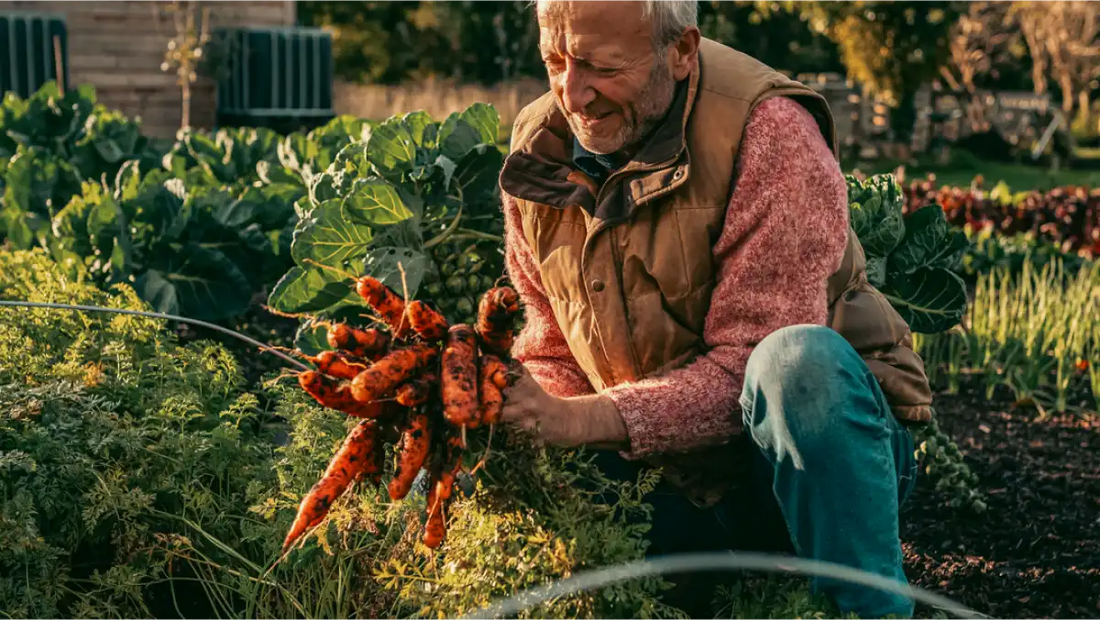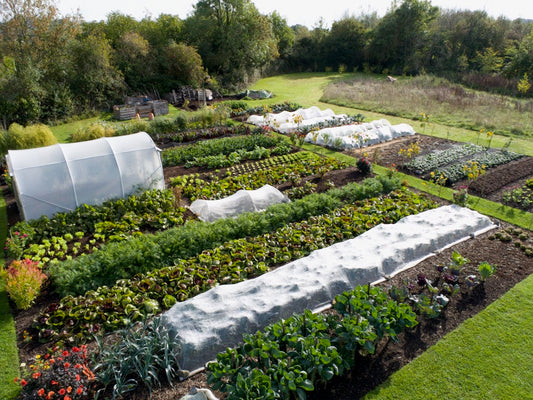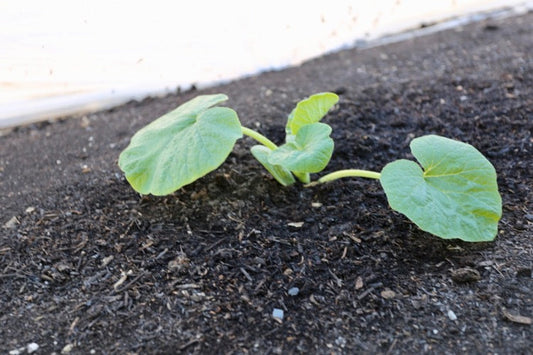
Getting started
Share
Advice for starting no dig
I give a brief outline of no dig, and explain how to get started. We have created a pdf of this information so that you can download it for easy reference.
Also check out my online course, No Dig Growing for Beginners!
What is no dig
No dig means two things.
First, leave soil undisturbed as much as is practical. You may occasionally need to use a spade or trowel, for example when cutting out bramble roots, making a hole for planting trees, or planting seed potatoes.
The second part of no dig is to feed the masses of soil life, with organic matter on the surface. This is how it happens in nature, where old leaves and woody materials are always decaying on top of the ground.
For growing annual plants such as most vegetables, especially in damp climates, I recommend using compost as the surface mulch, rather than undecomposed materials. This speeds up the increase in fertility needed by vegetables, and reduces habitat for slugs.
Why use no dig
No dig makes life easier for us and allows soil life to flourish out of sight, and plants grow more healthily. Both moisture retention and drainage are improved, there are fewer weeds to hoe or remove, and you don’t get muddy boots!
My advice takes the mystery out of gardening, to make it timesaving, straightforward and enjoyable. I receive many comments like this:
We’re just now entering year two of no dig and it certainly is very enjoyable compared to past years of endless weeding and bed preparation. TurbineBorescope, YouTube Subscriber
Don’t be daunted by what you may have read elsewhere or been told by others about no dig. For example, I often see claims that people cannot go no dig because they do not have, or cannot afford, enough compost.
Actually you can start with very little compost! Though if you can manage to access more, that makes it easier and increases harvests immediately, and in many subsequent years.
In addition, the results of my Two-Bed Trial are consistent over 11 years, that for the same amount of compost applied, the no dig bed gives 12% more food.
See my FAQ page for more understandings.
How to get started
1. Create a new, no dig bed
What size?
For beginners, a great option is to start small with just one bed, say 1.2 x 2.4m/4 x 8ft. Small areas concentrate your time and resources, and make management easier. Harvests are often just as plentiful as from larger areas that are less intensively cropped.
See this video of my 1.2 x 2.1m Bed by the Shed, which shows results of succession plantings all year.



